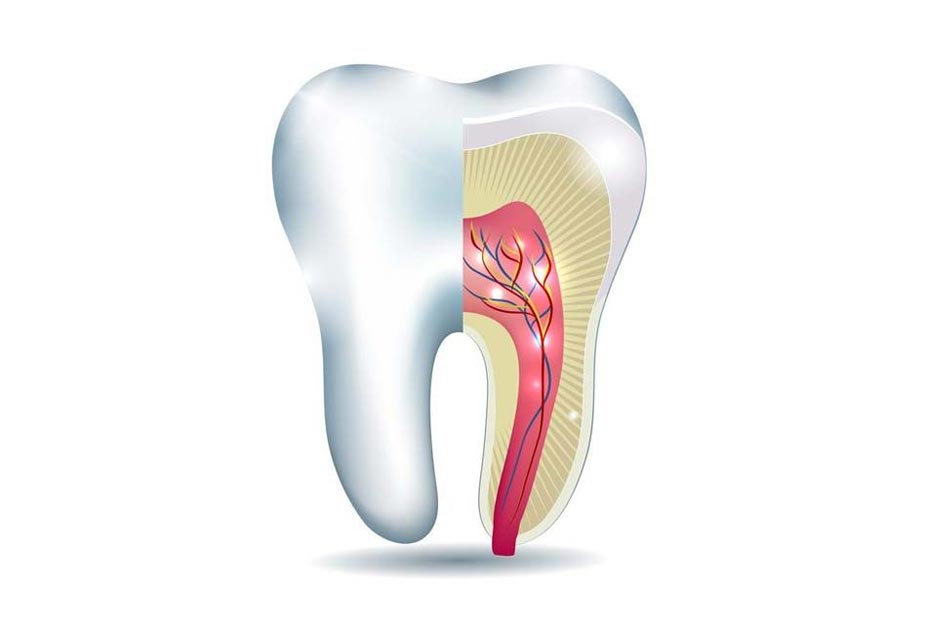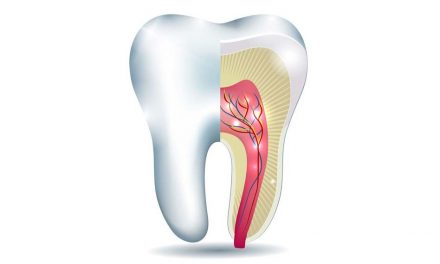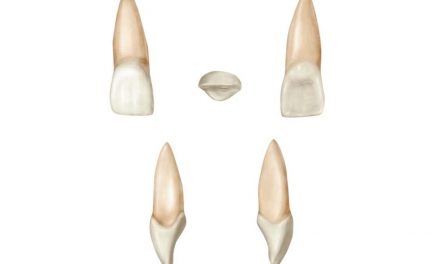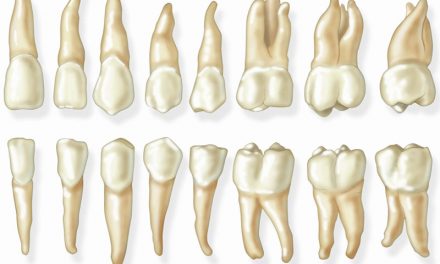Pulp is located within a tooth, and is mostly made out of nerves and blood vessels. It is enclosed within the central cavity of a tooth called the pulp chamber. It occupies the space in the centre of the crown and extends along the roots all the way to the apex. Those extensions are the tooth’s canals, and they vary in shape, size and numbers. Dental pulp is sometimes improperly called the nerve of the tooth.
The blood supply is essential for the nutrition, defence, and the constant formation of dentin. The substance called dentin is a hard layer located under the enamel, and that surrounds and protects the pulp. The nerves ensure the sensitivity of the tooth. Throughout a tooth’s lifetime, because of the continuous deposition of dentin, the pulp chamber progressively becomes smaller. This process is called calcification of the pulp.
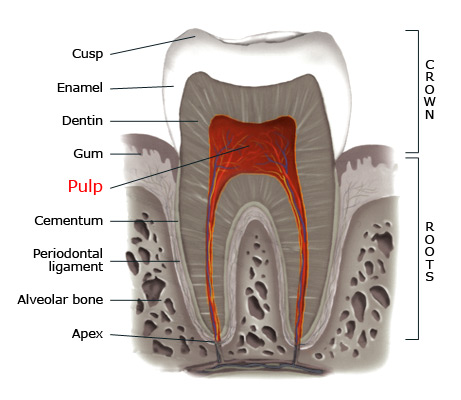
If the pulp is destroyed, the tooth becomes weaker and more brittle. The dead pulp tissue tends to darken the tooth to a greyish colour. In these conditions, the health of the tooth can be improved by root canal treatment.
Functions of the dental pulp
The pulp is made of connective tissue, which contains blood vessels, nerves, and other cells such as fibroblasts, odontoblasts, immune defence cells, and undifferentiated mesenchymal cells.
The main function of the pulp is to form the dentin layer of the tooth, which is located right underneath the enamel, and is the second hardest substance in the body. Specialized cells called odontoblasts form dentin.
Other functions of the dental pulp include:
- nutrition, as pulp keeps a supply of nutrients for the specialized cells;
- protection, pain is perceived when a tooth is under pressure, trauma or tremendous extremes in temperature;
- defence, as pulp creates what is called reparative dentin (or tertiary dentin) after a certain trauma, or even a dental treatment; reparative dentin protects the pulp furthermore.
Diseases of the dental pulp
A healthy pulp causes no pain to the tooth, and is responsive when submitted to extreme temperatures of hot and cold. Pain usually disappears a few seconds after the temperature source has been removed.
Reversible pulpitis is a mild inflammation of the pulp that makes the tooth momentarily sensitive to irritation or stimulus. The main causes of reversible pulpitis are bacteria from decay (cavity), trauma, fracture, extreme temperature change, tooth wear, or repetitive trauma caused by tooth grinding (bruxism). This also might occur a few days or few weeks after a dental filling has been done. The pulp returns to a non-sensitive state when stimulus is removed, or when the decay is repaired. The tooth wouldn’t need a root canal treatment unless the inflammation becomes more serious.
Irreversible pulpitis is a condition when the pulp is inflamed and infected beyond the point of no return, and healing is not possible. The causes are similar to the ones of reversible pulpitis, but more severe. The pulp would remain inflamed even if the cause is repaired or removed, and root canal treatment is needed.
Generally irreversible pulpitis causes pain going from mild to very intense, and that’s what makes a person consult a dentist. Mild pain can also be associated to reversible pulpitis. There are situations where irreversible pulpitis does not cause any pain at all, a state that may last a few weeks to a few months, but the tooth remains at risk of developing a serious infection.
Pulp necrosis is a condition when the pulp is either dead or dying. It is a situation that may cause from intense pain to the tooth, or no pain at all. Root canal treatment is indicated to prevent further complications such as infections, even if the person does not feel any pain at all.
There are situations where pulp diseases are also associated to sever tooth destruction. In those cases, tooth extraction should be performed instead of root canal treatment.
When someone has tooth pain that originates from the dental pulp, the dentist goes through a series of tests and examination based on observation and x-rays, in order to determine the correct pathology and propose the right treatment.
Reference
- Naudin C., Grumbach N., Larousse Médical, 3ième édition, Paris, 2003.
- Marcovitch H., Black’s Medical Dictionary, 41st edition, London, 2005.
- Leikin J. B., Lipsky M. S., Complete Medical Encyclopedia, First edition, New York, 2003.
- Wikipedia, the free encyclopedia, Pulp (tooth).

